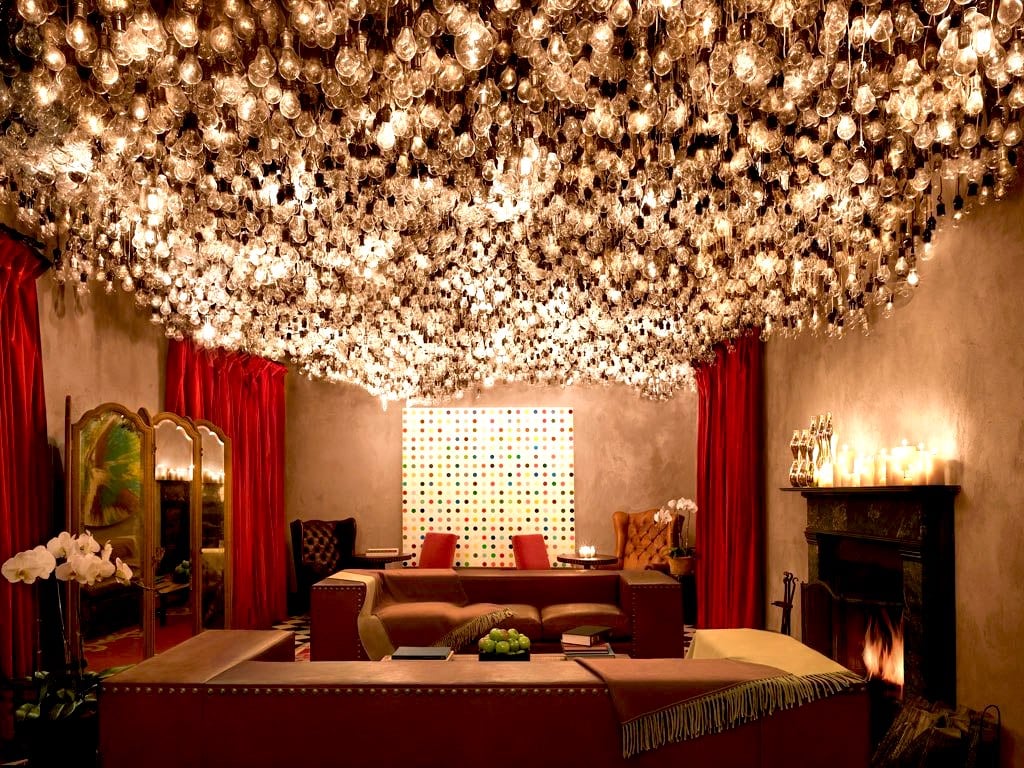
(Welcome to our five-part series on the psychology of great hotel interior design. This post, Part 2, focuses on lighting. Sign up for our newsletter to get the next installments right in your inbox!)
When guests walk into your hotel, they may not necessarily discern the exacting art and science of its lighting design. An unusual or opulent chandelier may catch their eye, but that’s it.
It sounds like a thankless job — as a designer, however, you know that the mark of good effort is being invisible. The guests may not see all the work you’ve done, but they’ll know how the hotel makes them feel. And isn’t that all that really matters?
The Roles of Lighting in Hotel Interior Design
The purpose of lights in hospitality design can be broken down into a few major categories:
Color Management
A hotel room’s overall color scheme can create distinct moods, which lighting can either emphasize or detract from.
A predominantly blue room, for example, can look cheery enough in the daylight. During nighttime, however, it can seem particularly gloomy. This is something that warm lights can counteract.
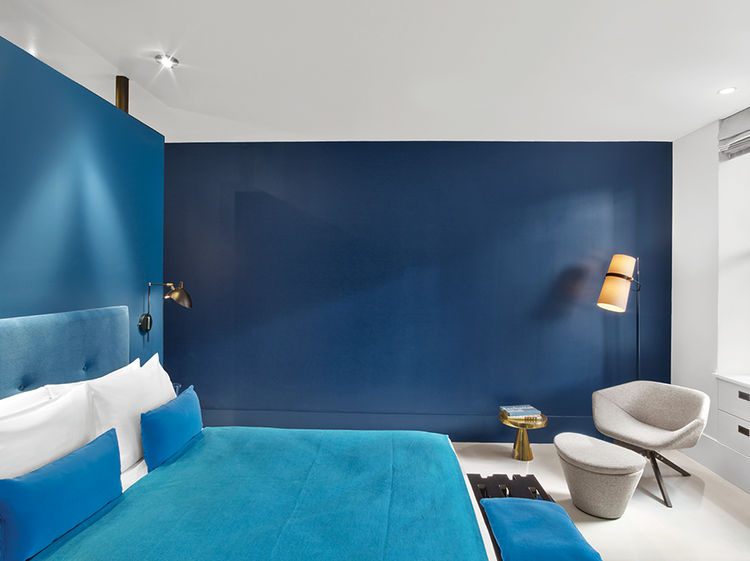
You also have to take into consideration the fact that sunlight affects the body’s circadian rhythm — that is, the biological mechanism that tells you when it’s time to be asleep or awake.
Sunlight, while seemingly yellow, actually has high amounts of blue light in its overall composition. This blue light decreases the production of the hormone melatonin (which helps us sleep) — it’s also the reason we’re seeing a lot of articles that tell us to stay away from electronics when it’s close to bedtime.
LED sources also have lots of blue light — so while it’s less expensive to operate, it comes at the cost of your guests’ comfort.
Warm lighting tones are best for helping guests get a good nights’ sleep. Nulty, a lighting design firm, collaborated with a hotel in creating faux windows for its rooms that have no natural sunlight. A mix of warm and cool tones bring depth to the window while imitating daylight, while curved forms provide the illusion of depth, helping the eye relax.
Learn more: How to Build FF&E Brand Standards: An In-Depth Guide
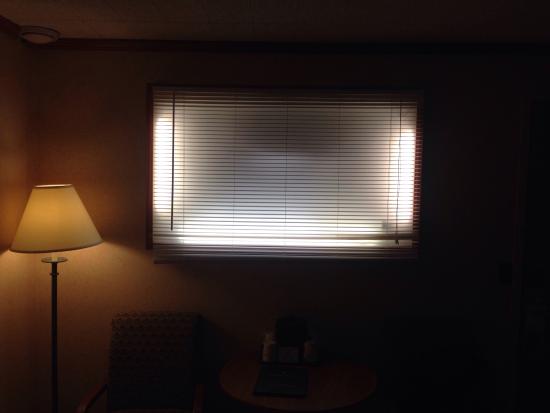
Additionally, a specific spectrum of light is used in the morning and evening to induce natural relaxation and awakening.
Directional Lighting
This type of light draws attention to specific elements. When guests first walk into your lobby, you’ll want the reception desk to be brightly lit. It’ll draw the eye, instinctively signaling to the guests what to do next, so they don’t have to stand around looking lost.
A well-lit reception desk, which should be the focal point of the lobby, also provides a warm, welcoming feeling. This is especially important considering that most guests will be tired or jet-lagged and wanting rest.
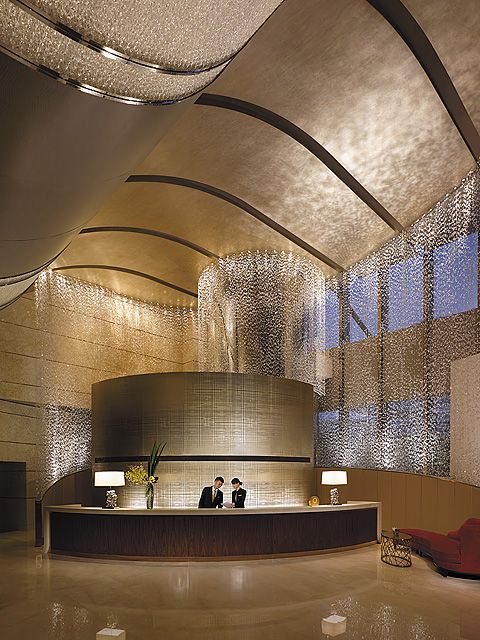
Subtle illumination can also softly highlight seating areas, providing yet another respite for the weary traveller. Here, warm and indirect lighting creates a relaxing atmosphere.
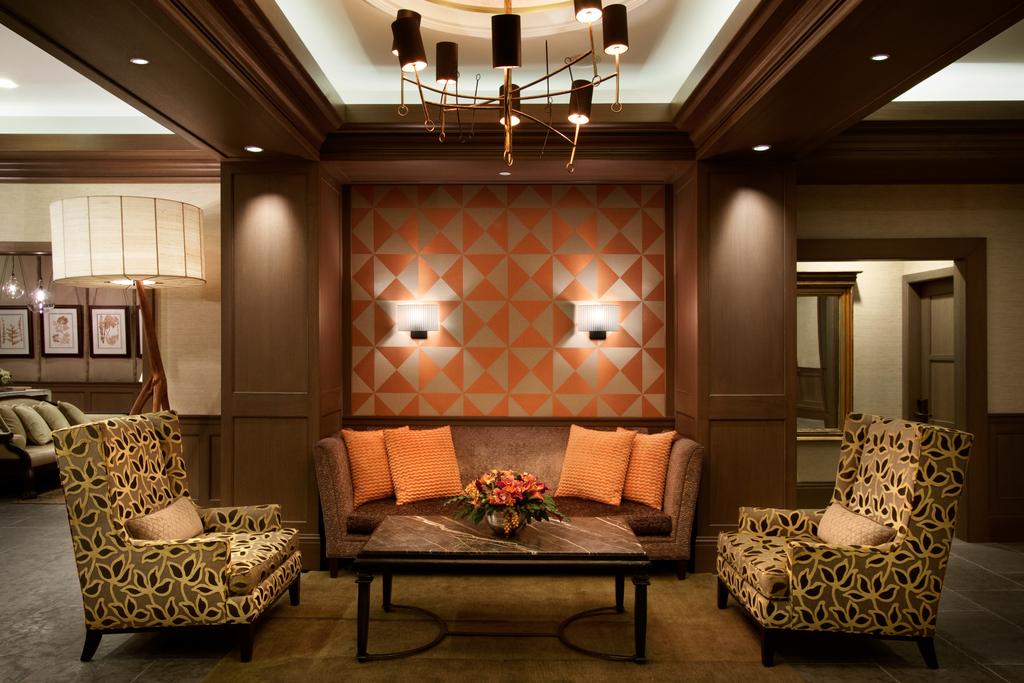
In a hallway, it can highlight a bust or a painting. In a hotel room, it can illuminate a little coffee nook, creating a sense of coziness.
Functional Lighting in Hotel Interior Design
Any light can help you see. In hotel interior design, however, the requirements are a little more specific. There are seven types you need to have:
- General ambient lighting for the room and bath – provides not just visibility, but sets the mood, as well.
- Task lighting for reading in bed or working at the desk – can be either a desk lamp or headboard lamp.
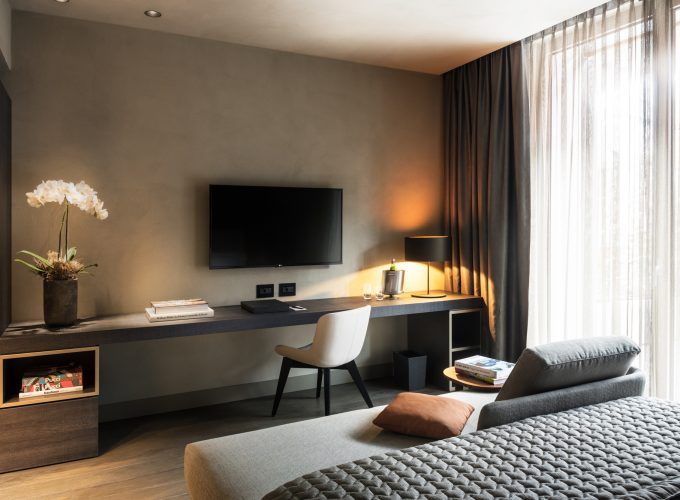
Image: Hotel Viu Milan - Mirror lighting – can be bulbs around the mirror or a larger light above it.
- Overhead lighting in the bath area – a warm, non-glare light helps guests stay safe.
- Accent lighting – although it adds to visibility, its main purpose is to create atmosphere. You can use
- Closet lighting – this can be a light right inside or just outside but pointing to the inside.
- Subtle night lights – your guests are in an unfamiliar environment which, unlike when they’re at home, they can’t navigate with their eyes closed. A soft light under desks, under the bed, and/or along the walls can help them find their way without having to turn on the harsher lights. It also creates that feeling of being safe at home.
-
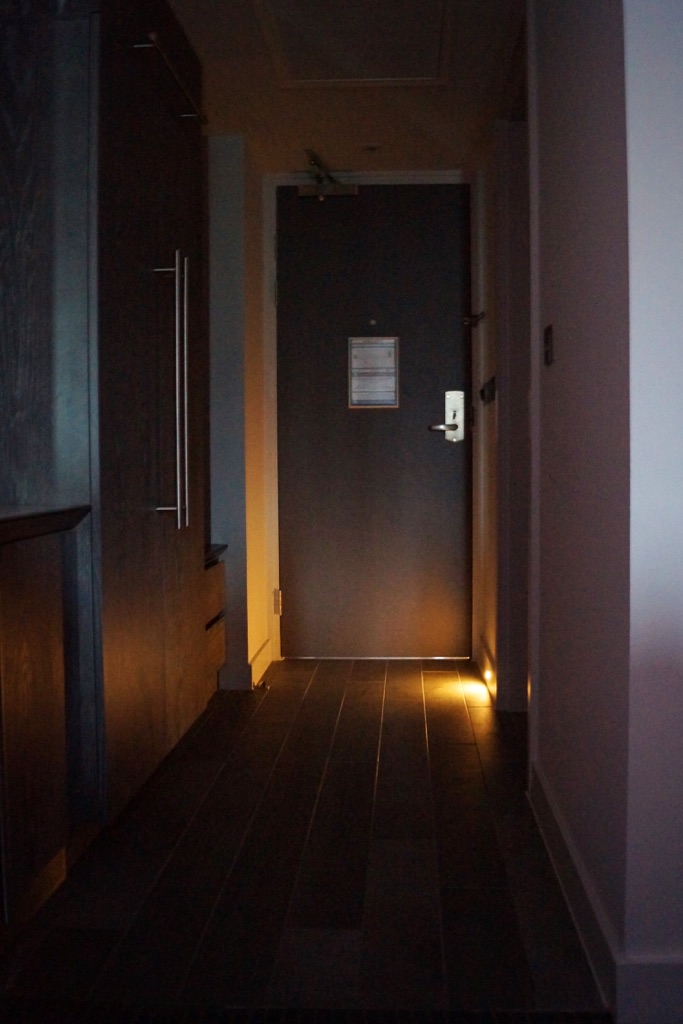
The Hilton Doubletree Hotel in Edinburgh. Image: Off On One
Space
An abundance of light can make a space appear larger than it actually is. This is especially important for business or budget hotels: Every bit of space is maximized for utility, which sometimes results in smaller or fewer windows. This predicament is made worse by close-proximity furniture arrangements like a coffee table and love seats in a sitting area.
Not only does it make guests feel cramped, it can also create a depressive mood, and even make the hotel seem cheap and second-rate.
While the obvious solution is to add lights, there are two things to take into consideration:
- Lack of free space – how do you add more things into an already-cramped space? Avoid floor lamps and desk lamps. Instead, incorporate wall-mounted lights into the hotel interior design.
- Color of the light – not just any light will do the job. In order to make a room feel as spacious and airy as possible, the light needs to be as close to natural light as possible. Artificial light runs the risk of making a space seem even more cramped.
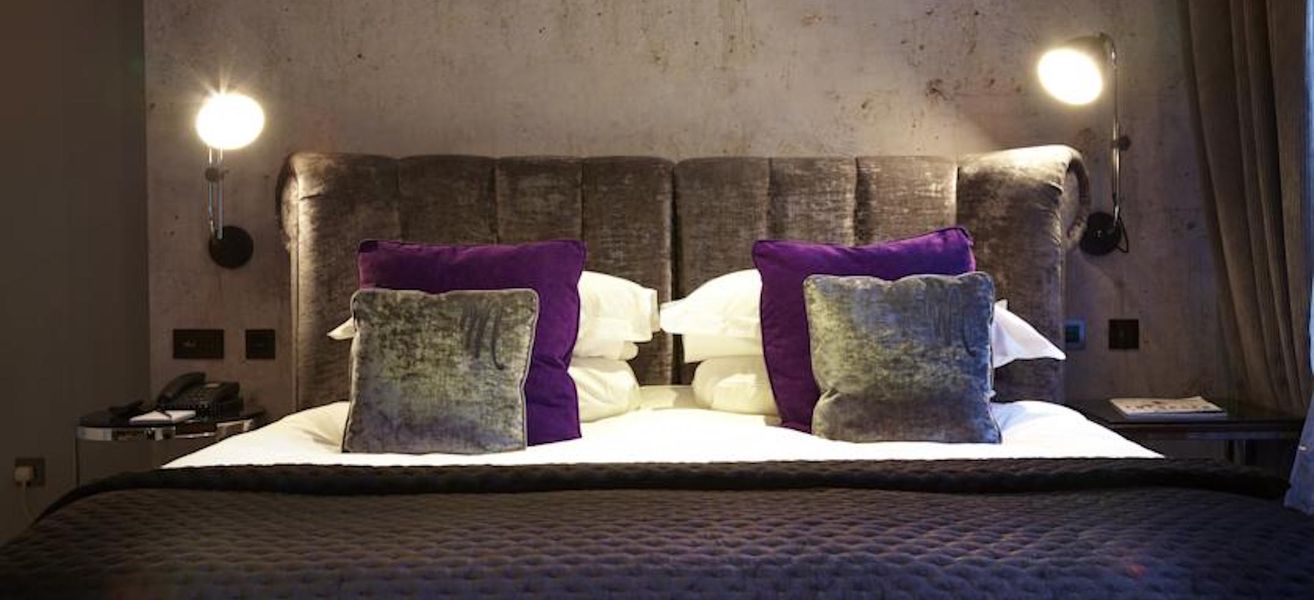
Branding and Aesthetic
There was a mention at the beginning about how a bombastic chandelier is probably the only thing that will catch a guest’s eye — and that’s fine. This is where light is meant to, ahem, shine. This is where the hotel and its designer makes their statement and tells everyone exactly what they are.
This custom lighting fixture in Bribie Island, Australia, for example, lends a youthful, vibrant feel.
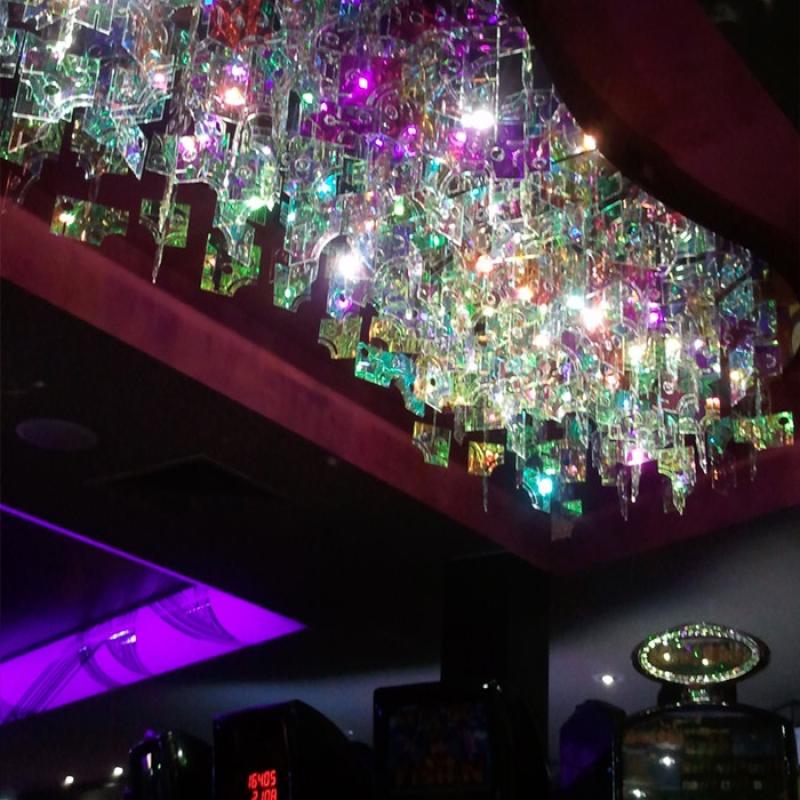
At the Ritz-Carlton in Singapore, it’s all about contemporary luxury.
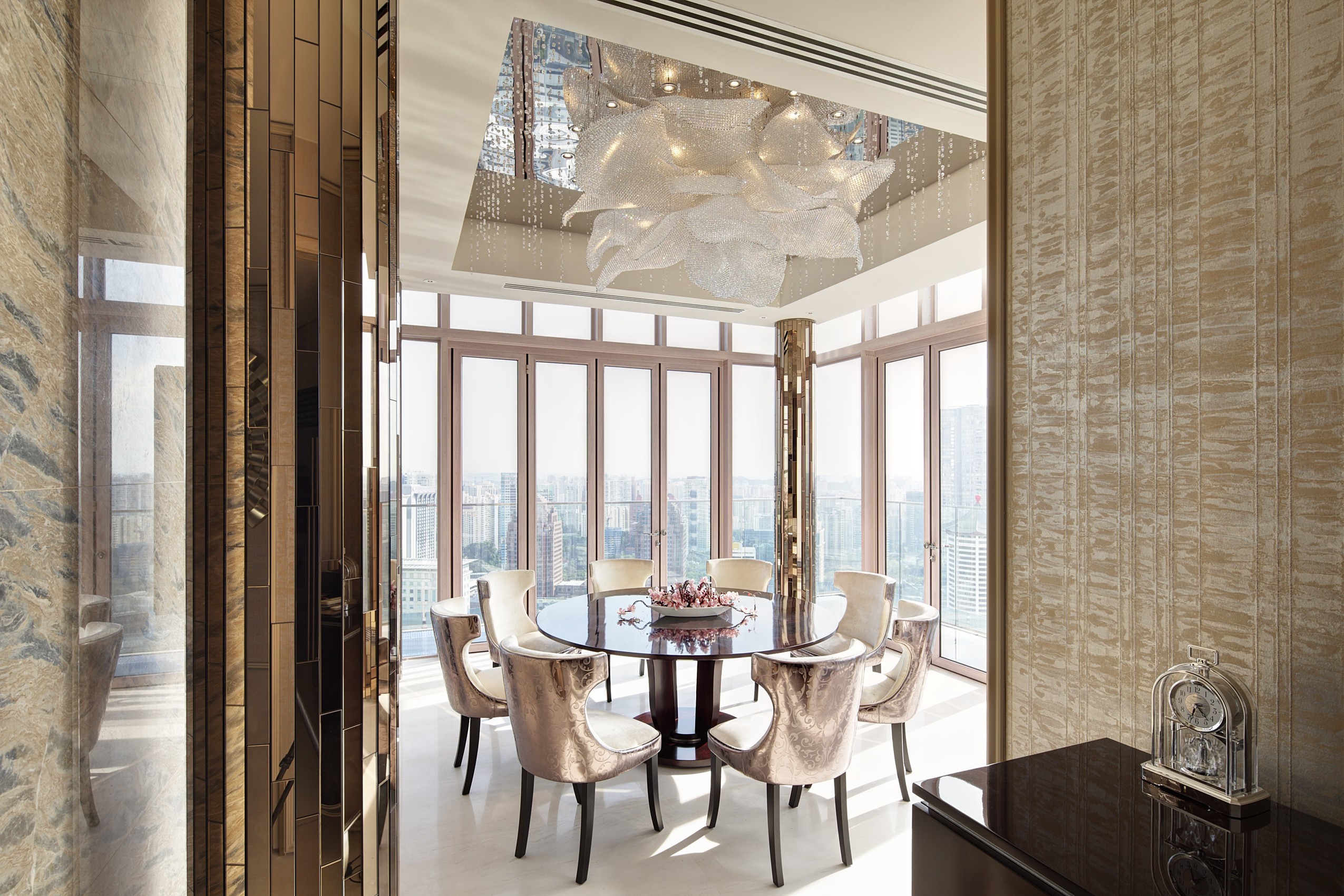
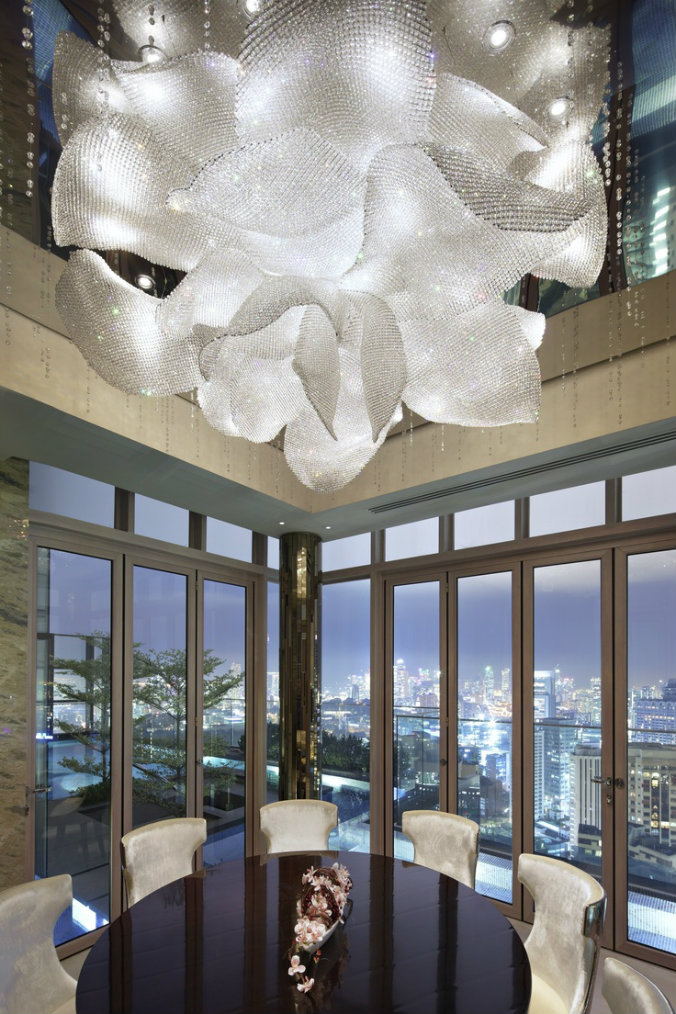
The “Diamond Necklace” at the Peninsula Paris is pure opulence.
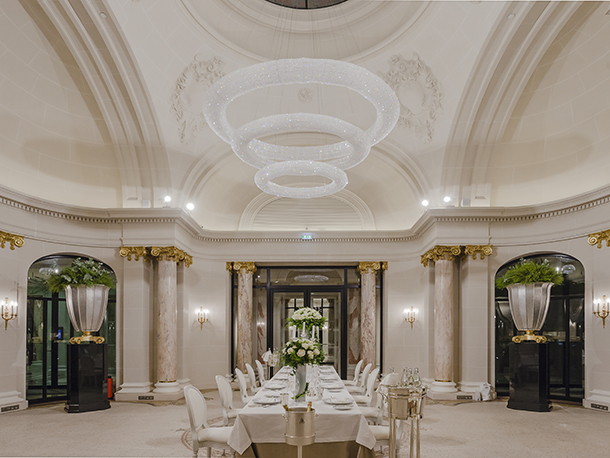
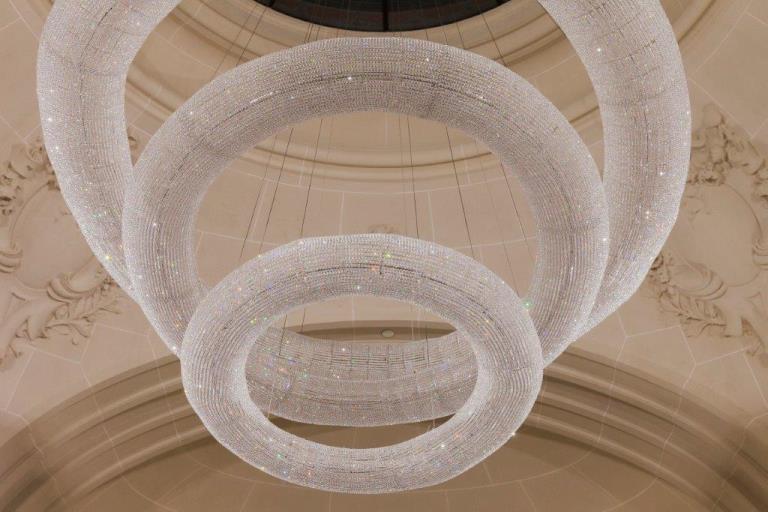
Last but not the least, the Sheraton in Bandung, Indonesia reflects the country’s wide blue skies with their lighting design.
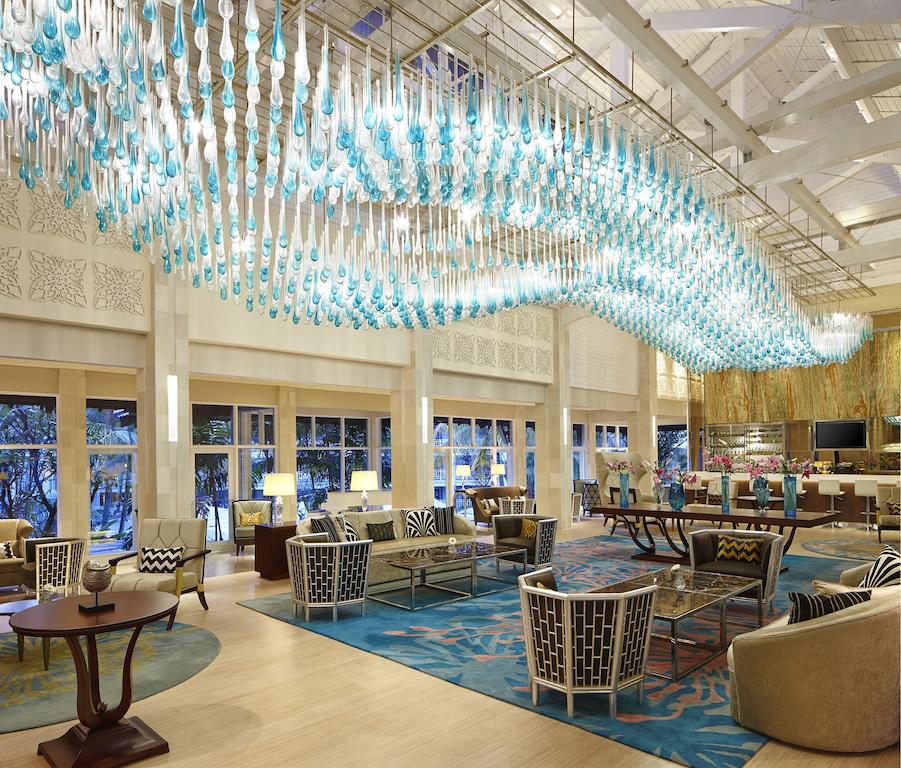
What’s your favorite hotel lighting project? Tell us in the comments below!
You can also read about the psychology of lighting design in restaurants‘ for more insight.
We hope you enjoyed Part 1 of our series on hotel interior design. We’ll publish the next installments over the next few days — sign up for our newsletter to get notified as soon as it comes out! In the meantime, find out how Fohlio can make FF&E specification faster and easier — design-build will never be the same. For example, you can build a firm-wide lighting library. Here, you can record every technical aspect and keep track of all the ways you’ve used each light in the past.
Expore Fohlio
Learn how to:
- Save days of work with faster specification
- Create firm-wide design standards
- Automate and centralize procurement
- Keep your whole team on the same Page
- Manage product data
- Track budget against cost in real time.
- Prepare for asset valuation
Published Dec 5, 2017